The words “full moon” in many languages

It is said that there are more than 6,000 languages worldwide (this is hard to imagine) and it is a fascinating concept to think, there are probably as many words for “full moon”.
Here we begin our little journey to the full moon. A few words about the fascinating quest of the greater purpose, that includes the full moon circulating through our lives. In layman’s terms and not always scientific (astronomy experts – don’t look too closely!). We would like to wish you illuminating moments. Enjoy!


It is said that there are more than 6,000 languages worldwide (this is hard to imagine) and it is a fascinating concept to think, there are probably as many words for “full moon”.
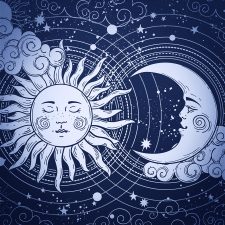
A full moon is when the Sun and the Moon are facing opposite, being in opposite direction from an Earth perspective.
This might feel astonishing if one imagines that the Moon is on one side, the Sun on the other and the Earth in between? Shouldn’t the Earth throw a shadow onto the Moon? Bingo – this is exactly what she does! But only when the Moon is exactly on the Earth orbit, the so called “ecliptic”. When this takes place, we speak of a lunar eclipse!

The Moon needs 27.33 days to circle around the Earth. Something that is also referred to as “sidereal time”. But because the Earth orbits the Sun, just like the Moon orbits the Earth, the Moon has to travel two further days in order to resume the same position to the Earth and Sun. This is then called the “sidereal time”. In order to determine the point of time of the reoccurring full moon, the sidereal time serves as basis.

We already know now that the moon month is mostly shorter than the calendar month, being on average approximately 29.5 days. If full moon falls on the first or second of a month, it is possible that another full moon occurs in the same month, for instance in July 2004:
Friday, 2 July 2004, 01:08:54 pm
Saturday, 31 July 2004, 08:05:06 pm
This event is also known as “blue moon”.
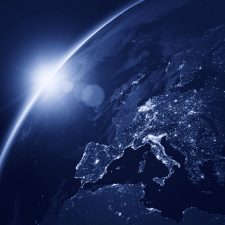
The answer is: “everywhere at the same time”. This refers to the so called Universal Time (UT) though, which is used for general astronomical events. We have already learnt that full moon is an astronomical event, where the moon, sun and the earth play a role by being in a specific position. So, full moon takes place at a specific time in the outer space. This point of time is specified by astronomers namely by the Universal Time.

There are multiple ways of approaching this question. If we look at it from a purely theoretical standpoint, we might be tempted to say that the full moon is infinitely short, since the phases of the moon are changing continuously. The moon is not yet quite full shortly before the full moon, and is already waning shortly afterwards.
However, there is a practical aspect that lets us quantify the full moon as a finite and measurable span of time: Since the Sun is significantly bigger than the Moon, its rays are able to reach just a little over half of the Moon’s surface. This means that the timespan in which the visible side of the Moon’s surface is irradiated (as seen from Earth) is longer than infinitely short.

Whether scientists, astrologers or esoterics, they agree on one thing: the moon influences earth and life on earth. For instance, it regulates the tides through its magnetism. Also continents feel the consequence of this magnetism and either raise or lower their position sometimes up to 26 cm.

In nature it is a known fact: for some animal species, mating takes place at full moon. However, the examples that can be found on this subject are rather simple. Full moon serves in some cases indirectly as the cause (for instance through the high water levels during the tides that the horseshoe crab uses to deposit its eggs) or also as the signal for both sexes of a species to begin at the exact same time to safeguard their future existence (a particular type of fly or also corals). It is understood that also wolves are led by full moon when it is time to mate.

… that people are looking for an argument at full moon or are especially happy …
… that if full moon is surrounded by a haze, a person dies …
… that you raise your hat three times to the moon (being a man) or you make a curtsey (being a woman), in order to protect yourself from misfortune until the next full moon …
… that whoever does not chink glasses with full moon at least once, does not deserve any happiness [Greek toast] …
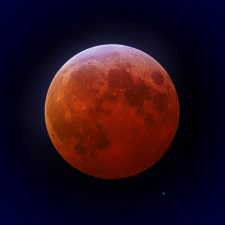
During a lunar eclipse, the Moon moves through the shadow of the Earth. Which means, that the Earth is positioned quite exactly between the Sun and Moon and casts its shadow onto the Moon. This is only possible at full moon and if some other requirements are met. Depending on whether the moon passes the partial or the core shadow of the Earth, we speak of a partial or total lunar eclipse.
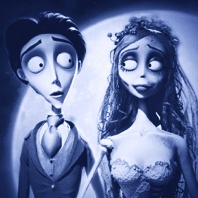
Fitting in with today’s full moon and the forthcoming events of Halloween, we dedicate this article to the stop motion movie »Corpse Bride« (2005) by Tim Burton, the master of bizarre and subtle productions. The movie is based on a Russian legend »Corpse Bride« and captures the story of a wedding between two people of varying social backgrounds (Victor & Victoria) or rather differing worlds (Victor & Emily), with the resulting tension.

Does the full moon light have an influence on how fish bite when fishing? Some claim it is pointless to fish during a full moon, but others are adamant that their catches are particularly good during a full moon and can barely be surpassed.
It can be assumed that it is more the moonlight, which could bear an effect, rather than the astronomical event full moon itself (which can also take place during the day, as we have already outlined). Hence, it should hardly make a difference whether one goes fishing in the night before/after or during a full moon itself, because the amount of light is roughly the same and is more influenced by clouds and weather rather than by the exact constellation of planets.
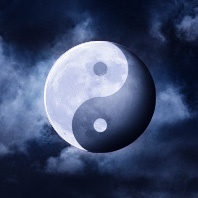
In view of the two original principles »feminine« and »masculine«, it is tempting to attribute the feminine, receiving principle to the moon and the masculine, creative principle to the sun. And most languages, where nouns posess articles, do reflect this, like for example the Romance languages (French, Spanish, Portuguese, Italian). However, there are a number of languages, for example German, Norwegian, Polish, Slovenian, Serbian or Czech, where the moon is masculine.
So, does the moon contain more masculine quality, after all, than originally assumed?
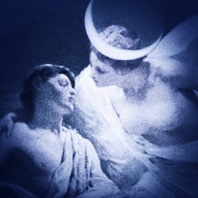
Selene is the Greek moon goddess, she is a daughter of Hyperion and Theia from the Titans, a race of deities. The two siblings of Selene are Eos (the goddess of dawn) and Helios (the god of the sun). These three, forge the bridge between day and night, the Sun and the Moon, masculine and feminine. Later, in Greek mythology, Selene has also been equated with Artemis, just like Apollo is linked with the sun god Helios.

The »sunfish« is called »moonfish« in many languages. It is the biggest and heaviest bony fish in the world, weighing up to 2,500 kg and showing off up to 3 m length and 4 m height! It can grow over 100 years old. Its Latin name »mola mola« derives from its shape, which reminds of a »millstone«, but apparently, also the Moon was the force behind the naming:

We all grew up with stamps. Those small, delicate images which tell stories of countries and events and which can decorate an envelope quite wonderfully. Nowadays, letters are increasingly stamped with bar codes or rolling stamps. Still, the stamps are surviving and occasionally, the moon is to be seen on them. Mostly when a historic space travel event is being celebrated.
Again and again it is spoken about the Moon in the night sky, and the visible size for us here from Earth and we would like to recall some details or outline and summarize them again:
The Sun and the Moon about the same size in the sky
The full moon in the sky appears to have almost the same size as the Sun by day, because the Sun is approx. 400 times as large as the Moon, but also 400 times further away. So it balances itself out and this is how these two very different sized orbs appear to be of the same magnitude to us.
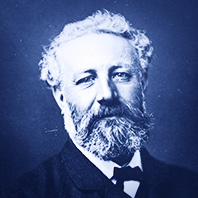
It is fascinating how the French writer Jules Verne (1828–1905) envisaged the journey to the Moon 100 years in advance in his science fiction novels and was able to put it into words. Admittedly, he was quite taken with describing journeys to unimaginable places: from the deep sea (“20,000 Leagues Under the Sea”), via the circumnavigation of the Earth (“Around the World in 80 Days”) through to the interior of the Earth (“Journey to the Center of the Earth”). Of course, space had to be part of this and this is how Jules Verne firstly wrote the novel “From the Earth to the Moon” (»De la Terre à la Lune«, 1865) and then later the sequel “Around the Moon” (»Autour de la Lune«, 1870).

Our Moon consists of rock, which was formed newly during its creation through a collision between the Earth and another planet, around 4.5 billion years ago. Lunar maria were created through meteoroid impacts, which can be seen as dark spots if observed from Earth.
A small amount of these rocks are on Earth. One part stems from a variety of moon missions (Apollo and Luna), the other from meteorites that struck the Earth as fragments. If you add up the registered mass of these rocks, you’ll end up with 738 kg (1,627 pounds). Which is actually »just a grain of rice« in comparison to the 81,000,000,000,000 kg that our Moon weighs.
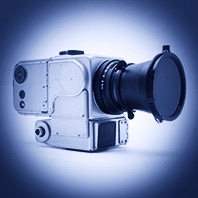
The medium-format cameras by the Swedish manufacturer Hasselblad, enjoy a legendary reputation and were – at least back then – probably the best cameras in the world. Not surprising that NASA chose exactly this brand during their equipment selection for their Moon missions. At that time, everything revolved around photographic quality of taking the pictures and moreso, around the reliability of the cameras. Back then, you did not have the opportunity to immediately examine whether a photograph turned out well, because all material could be developed only after the return to Earth. So, with regards to cameras there was the need to hedge one’s bets – inconceivable, if those photos would have turned out a complete flop.